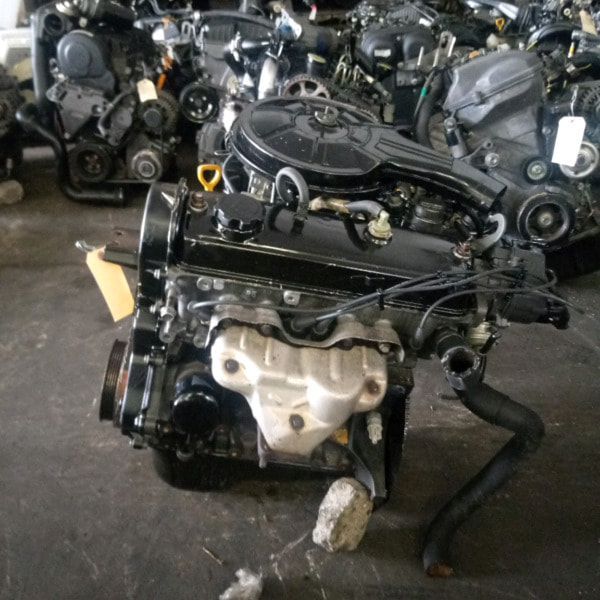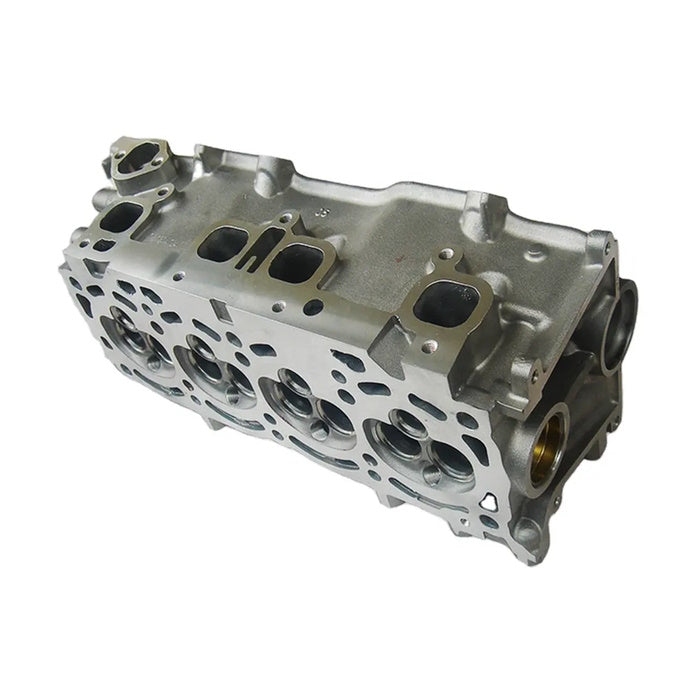Toyota Tazz: A Comprehensive Review of Performance and Comfort
Toyota Tazz: A Comprehensive Review of Performance and Comfort
Blog Article
Explore the current Patterns in Engine Technology With Tazz
In the swiftly advancing landscape of auto technology, Tazz stands at the leading edge, highlighting significant advancements in engine systems that focus on both innovation and sustainability. tazz. From hybrid engines that maximize gas efficiency to the introduction of hydrogen fuel cells, the fads forming modern-day powertrains are not just enhancing performance however likewise resolving crucial environmental challenges. As the market remains to press borders, it is necessary to take into consideration just how these growths will influence future transportation services and the broader effects for global energy consumption. What lies in advance in this critical makeover?
Hybrid Engine Innovations
Hybrid engine technologies stand for a pivotal shift in vehicle innovation, combining the benefits of inner burning engines with electrical propulsion systems. This integration not only enhances fuel efficiency however likewise decreases discharges, conference significantly stringent environmental policies. By using both power resources, hybrid engines can optimize efficiency, supplying power when needed while preserving fuel during less requiring motoring problems.
Current advancements in crossbreed innovation consist of improvements in battery effectiveness and regenerative stopping systems. These developments enable greater energy healing during slowdown, which can be redirected to assist in velocity or power auxiliary systems. Producers are focusing on portable designs and light-weight products to make best use of the performance of hybrid powertrains.
The growth of plug-in hybrids has actually additionally broadened the marketplace, enabling motorists to charge their cars utilizing typical electric outlets. This attribute typically enables for significant all-electric array, additional decreasing dependancy on traditional fuels. tazz. As the automobile sector remains to develop, hybrid engine modern technologies are expected to play an essential duty in linking the void between traditional vehicles and fully electric designs, offering a transitional service that satisfies diverse customer needs and preferences
Breakthroughs in Electric Powertrains
The automotive landscape is rapidly progressing, with electric powertrains becoming a leading pressure in lasting transportation. Advances in electric lorry (EV) innovation are dramatically boosting performance, user, and efficiency experience. Secret innovations consist of renovations in battery chemistry, which have boosted power density, lowered billing times, and extended overall battery life.
Solid-state batteries, for instance, assure to transform the market by supplying higher safety and security and performance contrasted to typical lithium-ion cells. Additionally, improvements in regenerative braking systems are allowing lorries to recoup power throughout deceleration, contributing to general effectiveness.
Along with battery innovation, electric motor layouts are coming to be a lot more advanced. Technologies such as incorporated motors and advanced thermal administration systems are helping to maximize power delivery and minimize weight, inevitably enhancing car characteristics.

Collectively, these developments highlight the commitment to transition in the direction of cleaner, a lot more reliable transport solutions, placing electrical powertrains at the forefront of automotive technology.
The Increase of Hydrogen Fuel Cells
Increasingly, hydrogen gas cells are acquiring traction as a viable alternative to conventional internal burning engines and battery electric lorries. This modern technology utilizes the chemical energy saved in hydrogen, transforming it into electrical power through an electrochemical reaction with oxygen. The key result of this procedure is water, making hydrogen gas cells an eco-friendly alternative with no emissions at the tailpipe.

Car manufacturers are progressively purchasing hydrogen fuel cell innovation, identifying its capacity for long-range applications and quick refueling capabilities that match standard gas. Additionally, markets such as sturdy transport and public transportation are especially well-suited for hydrogen fuel cells, where battery electric services click here to read may fall short due to weight and array limitations.
As research and financial investment remain to expand, hydrogen gas cells are poised to play a considerable duty in the future landscape of clean transport and power solutions.
Enhancements in Internal Burning Engines
Technologies in interior combustion engine (ICE) innovation are transforming standard automobiles to satisfy modern-day environmental requirements and efficiency assumptions. One of the most considerable improvements includes the combination of advanced gas shot systems. These systems maximize the air-fuel combination, improving burning performance and resulting in minimized emissions. Direct fuel shot, for example, enables far better atomization of fuel, resulting in even more total combustion and improved power outcome.
In addition, turbocharging has actually gained prominence, enabling smaller engines to provide higher performance without the weight of bigger engines - tazz. This innovation not just increases performance but likewise adds to reduce fuel intake. click here for more info Variable valve timing systems are additionally being refined, making it possible for engines to adjust to numerous driving conditions for boosted torque and responsiveness
Furthermore, using light-weight materials in engine building and construction is coming to be typical, further improving gas effectiveness by reducing overall car weight. Engine control units (ECUs) are progressively innovative, making it possible for real-time modifications that enhance efficiency and discharges.
These enhancements jointly indicate a critical shift in ICE technology, lining up with international sustainability objectives while still giving the efficiency chauffeurs anticipate from their vehicles. As the sector advances, these enhancements remain to form the future of conventional automobile design.
Future Trends in Engine Performance
Significant improvements in engine efficiency are prepared for as producers concentrate on integrating advanced innovations to meet rigorous ecological laws and customer needs. The shift in the direction of electrification, hybrid systems, and different gas is reshaping the automotive landscape, driving innovations that boost gas economic climate and minimize discharges.
Among the crucial patterns is the application of sophisticated materials and producing strategies. Lightweight composites and high-strength alloys add to decreased vehicle weight, thus improving overall performance. In addition, the adoption of turbocharging and variable shutoff timing modern technologies allows for enhanced power result from smaller engines, further boosting gas economic climate.

Conclusion
In conclusion, the exploration of engine modern technology discloses substantial advancements that prioritize sustainability and effectiveness. Innovations in crossbreed engine systems, electric powertrains, and hydrogen fuel cells show a commitment to decreasing emissions while boosting efficiency. Improvements in inner burning engines and an emphasis on lightweight materials contribute to total engine effectiveness. As the auto industry proceeds to progress, these trends will certainly play an important function fit a cleaner and even more sustainable future for transportation.
From crossbreed engines that optimize gas performance to the emergence of hydrogen fuel cells, the trends shaping modern-day powertrains are not just improving efficiency but also attending to critical environmental challenges.Hybrid engine developments represent a critical change in automotive technology, integrating the benefits of interior combustion engines pop over to this site with electrical propulsion systems.In addition, turbocharging has actually gotten importance, allowing smaller engines to deliver higher efficiency without the weight of larger engines. Additionally, the adoption of turbocharging and variable valve timing technologies allows for improved power result from smaller sized engines, further boosting fuel economic climate.
Renovations in inner burning engines and an emphasis on light-weight products contribute to total engine effectiveness.
Report this page